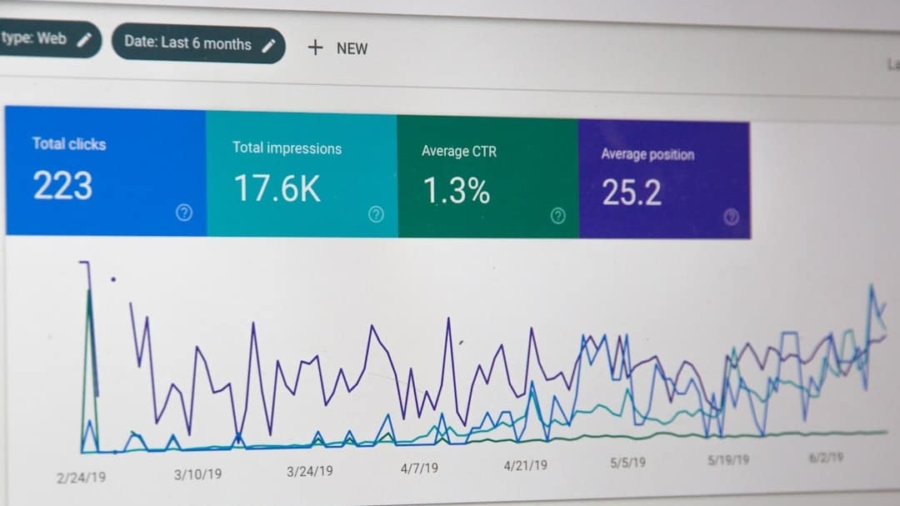The integration of artificial intelligence (AI) into human resources (HR) has revolutionized the way organizations manage their workforce. Traditionally, HR functions were heavily reliant on manual processes, which often led to inefficiencies and biases in recruitment, employee development, and performance management. However, with the advent of AI technologies, HR professionals now have access to sophisticated tools that can streamline operations, enhance decision-making, and ultimately improve employee satisfaction and productivity.
AI’s ability to analyze vast amounts of data quickly and accurately allows HR departments to make informed decisions that align with organizational goals. AI in HR encompasses a wide range of applications, from automating repetitive tasks such as resume screening to providing insights into employee engagement and retention. The use of machine learning algorithms enables HR teams to identify patterns and trends that may not be immediately apparent through traditional analysis.
As organizations continue to adapt to the rapidly changing business landscape, the role of AI in HR is becoming increasingly critical. By harnessing the power of AI, companies can not only optimize their talent acquisition processes but also foster a more inclusive and diverse workplace culture.
Key Takeaways
- AI is revolutionizing HR by streamlining talent management processes and improving decision-making.
- Tech departments can use AI to identify talent gaps and address skill shortages within their teams.
- AI can be utilized to analyze talent gaps by identifying current and future skill needs and predicting potential gaps.
- Predictive analytics powered by AI can help HR professionals anticipate talent gaps and take proactive measures to address them.
- AI can be leveraged to match employees with the right skills to development opportunities and foster a more inclusive workplace.
Identifying Talent Gaps in Tech Departments
In the fast-paced world of technology, identifying talent gaps within departments is essential for maintaining a competitive edge. As new technologies emerge and existing ones evolve, organizations must ensure that their workforce possesses the necessary skills to adapt and thrive. Talent gaps can manifest in various forms, including a lack of specific technical skills, insufficient soft skills, or an overall shortage of qualified candidates for critical roles.
Recognizing these gaps is the first step toward developing a strategic approach to talent management. To effectively identify talent gaps, organizations can employ a combination of qualitative and quantitative methods. For instance, conducting skills assessments and performance reviews can provide valuable insights into the current capabilities of employees.
Additionally, analyzing industry trends and benchmarking against competitors can help organizations understand the skills that are becoming increasingly important in their field. By leveraging data analytics tools, HR professionals can gain a clearer picture of where their tech departments may be falling short and develop targeted strategies to address these deficiencies.
Utilizing AI for Talent Gap Analysis
AI technologies offer powerful solutions for conducting talent gap analysis within tech departments. By utilizing machine learning algorithms, organizations can analyze employee performance data, project outcomes, and skill inventories to identify areas where talent is lacking. For example, AI can process historical data on project success rates and correlate them with the skills possessed by team members.
This analysis can reveal specific skill shortages that may be hindering project success or innovation. Moreover, AI-driven tools can facilitate real-time feedback mechanisms that allow employees to assess their own skills against industry benchmarks. This self-assessment can empower employees to take ownership of their professional development while providing HR with valuable data on skill gaps across the organization.
By combining these insights with predictive analytics, organizations can proactively address talent shortages before they impact business performance. This proactive approach not only enhances workforce planning but also fosters a culture of continuous learning and development.
The Role of AI in Predictive Analytics for Talent Gaps
Predictive analytics is a game-changer in the realm of talent management, particularly when it comes to anticipating future talent gaps. By analyzing historical data and identifying trends, AI can forecast potential skill shortages based on various factors such as industry shifts, technological advancements, and employee turnover rates. For instance, if an organization notices a trend toward increased automation in its sector, predictive analytics can highlight the need for upskilling employees in areas such as data analysis or machine learning.
By leveraging AI to analyze these variables, HR professionals can develop more effective recruitment strategies and workforce planning initiatives.
This forward-thinking approach not only mitigates risks associated with talent shortages but also positions organizations to capitalize on emerging opportunities in their respective markets.
Leveraging AI for Skill Matching and Development
One of the most significant advantages of AI in HR is its ability to facilitate skill matching and development within organizations. AI-driven platforms can analyze employee profiles, including their skills, experiences, and career aspirations, to recommend personalized development paths. For example, if an employee expresses interest in transitioning from a software development role to a data science position, AI can identify relevant training programs or mentorship opportunities that align with their goals.
Additionally, AI can enhance internal mobility by matching employees with projects or roles that require their specific skill sets. This not only helps fill critical talent gaps but also promotes employee engagement and retention by providing opportunities for growth within the organization. By fostering a culture of continuous learning and development through AI-driven initiatives, organizations can ensure that their workforce remains agile and equipped to meet evolving business demands.
Addressing Diversity and Inclusion with AI
Diversity and inclusion (D&I) have become paramount considerations for organizations seeking to create equitable workplaces. AI has the potential to play a transformative role in promoting D&I by minimizing biases in recruitment and talent management processes. For instance, AI algorithms can be designed to evaluate candidates based solely on their skills and experiences rather than demographic factors such as gender or ethnicity.
This data-driven approach helps ensure that hiring decisions are based on merit rather than unconscious biases. Moreover, AI can assist organizations in identifying underrepresented groups within their workforce and developing targeted initiatives to promote diversity. By analyzing employee demographics and performance data, HR professionals can uncover disparities in representation and take proactive steps to address them.
For example, if an analysis reveals a lack of women in leadership positions within a tech department, organizations can implement mentorship programs or leadership training specifically aimed at supporting female employees’ career advancement.
Overcoming Challenges and Ethical Considerations
While the benefits of AI in HR are substantial, there are also challenges and ethical considerations that organizations must navigate. One significant concern is the potential for algorithmic bias, which can occur if AI systems are trained on historical data that reflects existing biases in hiring or promotion practices. To mitigate this risk, organizations must ensure that their AI models are regularly audited for fairness and transparency.
This involves scrutinizing the data used to train algorithms and making adjustments as necessary to promote equitable outcomes. Additionally, there is a growing need for organizations to prioritize data privacy and security when implementing AI solutions in HR. Employee data is sensitive and must be handled with care to maintain trust and compliance with regulations such as GDPR or CCPOrganizations should establish clear policies regarding data usage and ensure that employees are informed about how their information will be utilized within AI systems.
By addressing these challenges proactively, organizations can harness the power of AI while upholding ethical standards.
The Future of AI in HR Talent Management
As we look toward the future of HR talent management, it is clear that AI will continue to play an increasingly pivotal role in shaping how organizations attract, develop, and retain talent. The ability to leverage data-driven insights for decision-making will empower HR professionals to create more effective strategies for addressing talent gaps while fostering a culture of inclusivity and continuous learning. Moreover, as technology continues to evolve, we can expect even more sophisticated AI applications that will further enhance workforce management capabilities.
The ongoing integration of AI into HR practices presents an opportunity for organizations to not only optimize their operations but also create workplaces that are more responsive to the needs of their employees. By embracing this technological shift and addressing the associated challenges thoughtfully, companies can position themselves as leaders in talent management while driving innovation and growth in an ever-changing business landscape.
In addition to utilizing AI to spot talent gaps in tech departments, HR teams can also benefit from the latest technology tools such as tablets. Enicomp recently published an article on the best tablets for business in 2023, which highlights the top devices that can enhance productivity and efficiency in the workplace. By incorporating cutting-edge technology like tablets into their workflow, HR teams can streamline their processes and make more informed decisions when it comes to talent management.
FAQs
What is AI?
AI, or artificial intelligence, refers to the simulation of human intelligence processes by machines, especially computer systems. These processes include learning, reasoning, and self-correction.
How does AI help HR teams spot talent gaps in tech departments?
AI can help HR teams spot talent gaps in tech departments by analyzing large amounts of data to identify patterns and trends in the skills and experience of current employees. This can help HR teams understand where there may be gaps in the talent pool and where additional hiring or training may be needed.
What are some specific ways AI can be used to spot talent gaps in tech departments?
AI can be used to analyze resumes and job descriptions to identify specific skills and experience that are in high demand but may be lacking in the current workforce. It can also be used to track the career progression of employees to identify areas where additional training or development may be needed.
What are the benefits of using AI to spot talent gaps in tech departments?
Using AI to spot talent gaps in tech departments can help HR teams make more informed decisions about hiring, training, and development. It can also help organizations stay ahead of the curve in terms of technology and innovation by ensuring they have the right talent in place to drive their tech initiatives.
Are there any potential drawbacks to using AI to spot talent gaps in tech departments?
While AI can be a powerful tool for identifying talent gaps, it is important for HR teams to remember that it is just one piece of the puzzle. Human judgment and intuition are still important in the hiring and development process, and AI should be used to complement, rather than replace, these human skills. Additionally, there may be concerns about privacy and bias in the use of AI for talent analysis, so it is important for HR teams to use AI responsibly and ethically.



